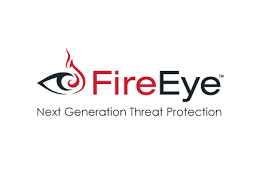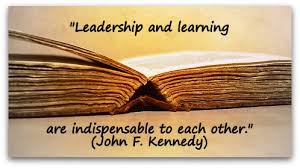
The American Stock Exchange; WidePoint Corporation
Order Instructions:
Select an industrial or commercial U.S. based company that is listed on one of the major stock exchanges in the United States. Each student should select a different company. Avoid selecting an insurance company or a bank—the financial ratios for insurance companies and banks are different. Write a seven- to eight-page double-spaced paper about your selected company answering the questions posted under the Week 2 Minicase assignment posted in Doc Sharing. This Minicase paper should be submitted to the Week 2 Minicase Dropbox.
SAMPLE ANSWER
Introduction
The American Stock Exchange comes third after NYSE and NASDAQ of all stock exchanges in America. It is estimated to handle around ten percent of all trades in America. It lists companies from all over America. These companies are of different sizes and deal with different goods and services. It is famous for having the least requirements in terms of minimum requirements for the listing companies. As a result, it has listed many small companies who find the other exchanges too harsh. The American Stock Exchange trades in small cap stocks, exchange trades funds, and other options (World Bank, 2010).
WidePoint Corporation is based in McLean, Virginia in the United States of America. The company provides products that are closely linked with technology. It targets both the US government and commercial American markets. WidePoint Corporation has established itself as a top provider of managed cyber security solutions mobility services, and telecom lifecycle management. It offers information technology solutions, which are cloud-based, secure and wide in terms of enterprises targeted. Such solutions are necessary for both government and companies to comply fully with advanced system requirements and the government-mandated regulations on information technology(World Bank, 2010). WidePoint has a high discount due to its position currently. It is in a trend of growing further. The reason behind its bright future is that it is in a position to acquire a growth trend that can be both inorganic and organic. Looking at the revenue figures and the expenses incurred by the company, a price point for the next few months can be estimated (Heisterberg & Verma, 2014). A figure of between two and five is reasonable as a price point for the company is the aforementioned period. Widepoint Corp received a financial boost from Homeland Security as fierce court battle. The financial blanket has helped it cushion it capital debt and is thus less volatile. There are positive estimates for the foreseen revenue to be generated. Most of America’s powerful brands have reached their level of success through long-term campaigns that have great visibility. These campaigns are marked a consistent recital or trumpeting of a simple message for the masses. This move proves a strategy of high economic demands through vigorous promotions. However, some brands that have emerged do not follow the vigorous marketing strategies. They instead focus on quiet behind the scenes approach instead of promoting sales for their products (Mergent, 2009). Widepoint Corp falls in the first category.
The company has endured a rough period being near bankruptcy, but it pulled through. The Widepoint Corp has gone through an amazing graduation and growth in the last couple of decades. These changes have brought forward demand for its products worldwide an objective of many managers. These numerous changes in competition in a highly attractive motorcycle industry and the brands extended reach for much-untapped business have resulted in the brand’s success. The company is now enjoying many sales and gaining lots of profit after reinventing itself as both a brand and a company(Heisterberg & Verma, 2014)..
Widepoint Corp indicates a beta of 1.61. This beta value shows that its volatility is higher than of its market. If the company did not have any long-term debts then it would be less volatile (Mergent, 2009). Within the structure of its capital, the beta would be less than one. This beta value would mean that Widepoint Corp is less volatile while compared to the market.
The company’s financial statements show a marginal tax rate of 34% for statutory federal income and 4.9% of state income tax. These figures lead to a cost of debt of 13,281,134 dollars before interests and tax, 3.6 million dollars of interest expenses and 4.5 million income tax expenses. The results are 141,302, 128 dollars after tax debt. There is a long-term debt to equity ratio of 3.71. The total shareholder’s equity sums up to 34.9 million dollars. The average earning per share is -0.11 down from -0.08. As such, the cash dividend yield went down with an average sale of shares at 0.73 getting an operating profit of -0.6 with a working capital and tangible books values of 0.15 each. The average capital expenditure of Widepoint Corp is 0.1. The price earnings of the shares stand at 5,209,890 up from 3,410,322.
Preferred Stock can be defined as special security for equity. It possesses properties of the debt and the equity. WidePoint Corp’s preferred stock for the last quarter was averaged at €0.00 Million. The market value of common stocks has to be added to that of preferred stocks to get an enterprise value. WidePoint Corp gained an enterprise value for that quarter of €-6.88 Million. WidePoint Corp’s book value per share for the same period was €0.38 with its diluted earnings per share being €-0.02 million (World Bank, 2010).
The calculations are listed below:
The Enterprise Value = Market Cap +Preferred Stock + Long-Term Debt + Short-Term Debt + Minority Interest – Cash and Cash Equivalents
= 0 + 0 + 0.833110576495 + 0.916867147821 + 0 – 8.63138198343 = -6.88
Book Value per Share = (Total Shareholders’ Equity – Preferred Stock) / Total Shares Outstanding
= (31.1004187829 – 0) / 82.48 = 0.38
Earnings per Share (Diluted = (Net Income – Preferred Dividends) /Shares Outstanding (Diluted)
= (-1.2563485699 – 0) / 82.125 = -0.02
It is important to note that all numbers are in millions except for the ratio and the per share data. The numbers are also represented in their representative currencies.
A group of senior managers reacquired the company after it had been acquired by an American organization AMF. While under AMF, The Widepoint Corp suffered huge losses as it tried to cope with competition from similar companies. One chief manager suggested a change of strategy to deal with the collapse of Widepoint Corp market. He suggested going back to the details in the IT solutions. This decision was because the business key was in knowing both the clients and the business environment. The rebuilding of the Widepoint Corp involved considering the already existing corporate culture beliefs in restructuring its brand image. This strategy was based on the basic American main principles of being adventurous free and an individual (Graham et al., 2010). Widepoint Corp’s Management ideology and the plan were aimed to control innovation and its penetration to the international markets. It also aimed to adapt to differences in culture and beliefs while at the same time maintaining the brand image(World Bank, 2010).
A transformational leadership style that was stirred by customers and employees focus on more than themselves was quickly utilized by the company (Heisterberg & Verma, 2014). Widepoint’s management team was actively involved by participating in activities like following their trading online and attending promotional rallies. A policy of not selling transportation but rather a transformation was important to their marketing (Graham et al., 2010).
The company has had an up and down tent in the stock market. The last two years , however, have resulted in a tremendous increase in its shares turnover. The company has thus enjoyed a successful trend over the last couple of years. It is ranked as an aggressive competitor when compared to all the stock exchanges in America (Smith, 2012). By these observations the companies risk structure is tolerant to many risks both financial and operating. Widepoint Corp has a debt to capitalization ratio of 9.28.
Investing in the company would be beneficial, as the company has made plans to remain relevant and competitive in America and globally. In controlling the external business environment, Widepoint Corp has defined a new strategy that focuses on marketing and advertising. This strategy mainly looked at the odds involved in the setup of relations with stock consumers. A big portion of their market today consists of members from the professional sector such as the legal officers, physicians, accountants and teachers(World Bank, 2010). The management team understands they have to shift focus to their efforts of knowing their customers to grow a better customer loyalty foundation. Some key factors were considered by the management team when trying to decide on where to expand. They first had to understand the culture of the new clients they were targeting. They also had to study critically demographics on average client size and annual or monthly income. This data would guide them in segmenting the market (Mergent, 2009).
The company also has a good corporate and clientele handling culture. As thus, it is likely to maintain its market share. Widepoint Corp realized that people needed to have a vision that is shared with the company values. This move was aimed at knowing the customer and the business. It also had an objective to look closely at the details on the products and consumer preferences. This unique and bright management style gave Widepoint Corp the chance to move away from a self-managed style to a more customer-based approach. The strategy was to get the company to braid its customer support base(Koller et al., 2010)and (Wasserman et al., 2009).By employing a theory on acquired needs, its management used the need to achieve a theory focused on motivation with the need to overcome its challenges in a better and more efficient way. Some of these problems were changing the corporate structure, brand and marketing to produce and sustain its offerings and supply of products. Another way was to monitor closely customer needs and detail on products and the market. Widepoint Corp management had learned of the importance of these relationships with workers and clients. Developing these relationships was a major part of the company’s corporate culture. These values and strategies make it an ideal company to invest (Heisterberg & Verma, 2014).
Conclusion
The Widepoint Corp has made tremendous efforts in selling technology solutions in the US and other markets abroad. It has overcome very many problems since it was established. This success can be attributed to the development of serious management strategies by the company’s management team. Some of these strategies like the focus on detail and consumer demands were developed after the company had incurred huge losses. However, these strategies emerged as the turnaround points for the company’s success. The management team that has been in charge over the years have done a great deal of work in raising the company to where it is today. It now has a large shareholder backing making its capital base to be un-marched amongst its competitors.
References
Graham, J. R., Smart, S. B., &Megginson, W. L. (2010). Corporate finance: [linking theory to what companies do]. Mason, OH: South-WesternCengage Learning
Heisterberg, R. J., & Verma, A. (2014).Creating business agility: How convergence of cloud, social, mobile, video, and big data enables competitive advantage.
Koller, T., Goedhart, M. H., Wessels, D., & Copeland, T. E. (2010). Valuation: Measuring and managing the value of companies. Hoboken, N.J: John Wiley & Sons, Inc.
Mergent, Inc. (2009). Mergent OTC unlisted manual.New York: Mergent.
Smith, R. C., Walter, I., & DeLong, G. (2012). Global banking. Oxford: Oxford University Press.
Wasserman, P., McLean, J. W., & Gale Research Company. (2009). Consultants and consulting organizations directory. Detroit, Mich: Gale Research Co.
World Bank.(2010). World development indicators 2010. Washington, D.C: World Bank
We can write this or a similar paper for you! Simply fill the order form!












